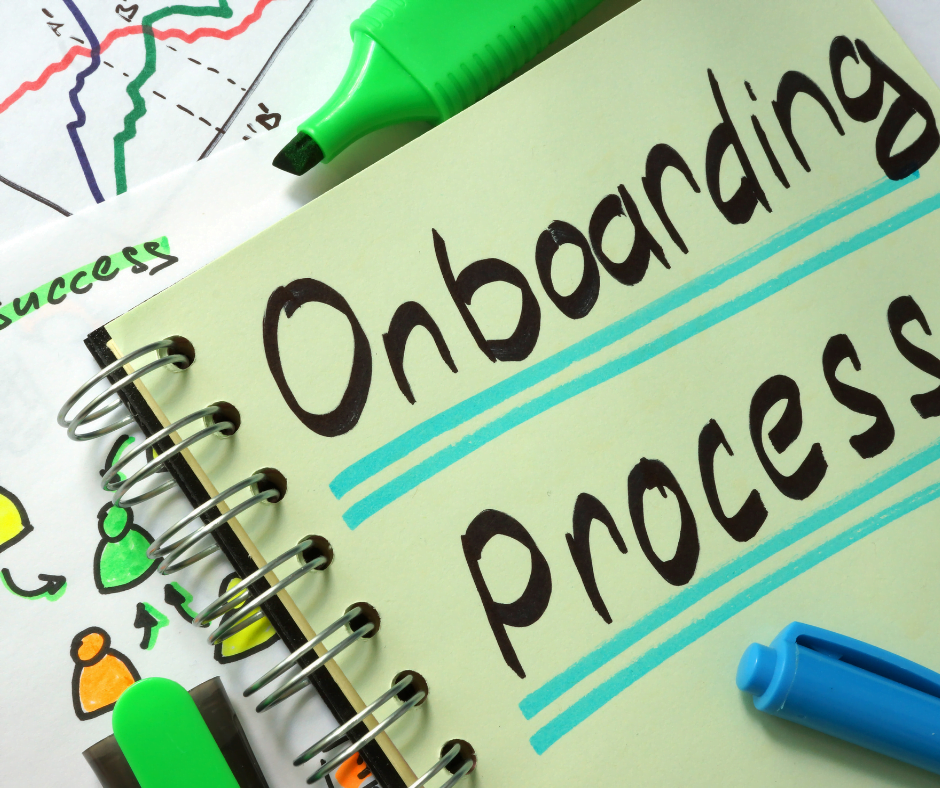
The last few years have seen a drastic change in the way that people are working, as businesses were forced into adopting a remote working model.
While the switch to a remote working model might not have been ideal, many companies are set to continue with a remote or hybrid working model in the future.
This is because businesses have learned that offering a remote working model can offer a host of different benefits, such as increased productivity, employee engagement, and a lower rate of absenteeism.
While the benefits of a remote working model are numerous, it is not without its own challenges. One of the biggest challenges that managers and business leaders face when working with a remote working model is onboarding.
Redefining your onboarding process to suit the needs and demands of your remote workforce is vital for ensuring long-term success, high rates of employee engagement, and productivity throughout your remote workforce.
The list below outlines some of the top tips for onboarding remote workers and employees into your business today.
Why Is Onboarding Experience Important For New Remote Hires?
Onboarding is the process of initiating new employees into an organization.
The goal of onboarding is to ensure that new hires are quickly productive and successful. There are many different things that should be considered when designing onboarding. And when it comes to hiring a new remote employee, it needs extra care to make sure a prepared onboarding experience program.
The design of your onboarding program for remote workers will depend on the type of people you want to attract and retain, your company culture, and the way people do their work at your company.
Some companies focus on how great their team members are and what they offer, while others focus on what a great place to work it is for everyone.
But the key takeaway for all companies should be that everyone comes with a different set of expectations about what onboarding will mean for them personally. So you need to know who you’re hiring in order to build an onboarding experience that the new employees in your remote team.
8 Best Tips For Onboarding Remote Workers
It’s important to make sure a great onboarding experience for remote employees. Their smooth adoption of the new work environment directly makes or breaks the success of your new remote hire.
Many remote teams that hire staff remotely succeed in their new hires. They have great onboarding strategies for remote employees in place and use their best practices for onboarding remote workers successfully.
Below are the 8 best practices for onboarding remote employees.
Welcome New Members of Staff

Welcoming new employees into your business is a vital step for building strong relationships and making a new member of staff feel comfortable and supported within your working culture. Welcoming remote staff can be more challenging than an in-house team, but it is completely possible.
When you are looking to welcome new members of staff into your business, you should focus on helping staff to meet other members of your team and to get comfortable within your working culture.
There are many ways that this could be done; for example, you could host a virtual lunch or ask your employees to record welcome messages introducing themselves.
Set-Up Work Stations

When you are onboarding remote workers, it is vital that you take the time to ensure that all staff has access to the equipment they need to be able to perform their duties to a high standard. Before you talk to your new hire, it is useful to spend some time thinking about what tools are necessary for remote working.
You should then work on creating a list of tools you think a new hire will need. This list comes to include anything from home office equipment like a computer and desk chair. You should also think about role-specific tools like industry software and communication tools.
Once you have outlined what a new hire will need to be able to perform their duties, you can then think about making a budget. Creating a budget for each new hire, reaching out to find out what equipment they have, and sending over the necessary supplementary equipment will enable you to ensure a new hire has all they have to hit the ground running on their first day.
Connect New Hires With Buddies

Connecting a new employee with a buddy within your organization can be very useful in the onboarding process of remote workers.
Matching new employees with a buddy who works in a relevant role will be able to help new workers feel more comfortable and confident in their new roles.
Having someone to reach out to directly will also help new employees find out the information they need about their specific roles.
When you are looking to connect new remote workers to an appropriate buddy, you should consider the specific role of the new employees.
You should also think about what existing employees have good communication skills and are performing well within your organization. Taking the time to make the right buddy match can make a big impact on your buddy system.
Set Up An Training System

Training and education can be critical when it comes to effective onboarding of both remote and in-person employees.
The right training system will enable you to ensure that all of your employees are aware of the best practices and processes for their new roles. As Thinqi explains, having an effective learning and training system in place will help you to start off on the right foot when it comes to employee onboarding.
A training system will help you to ensure that a new employee understands what their role is within your organization and how to best perform from the first day.
This can also help you to ensure that no bad habits are formed and that only the best practices are used to ensure the highest rates of productivity.
Learn From Employee Feedback

When it comes to setting up an effective remote working onboarding system, it is difficult to operate completely in the dark.
Gathering employee feedback on your remote onboarding processes can be critical for long-term success and improving your operations.
When you are looking to gather feedback on employee onboarding experience can be useful to set out a questionnaire.
Creating a survey that asks employees about their onboarding experience, what they learned, what information they found useful for their role, and how they would improve the process can be hugely useful.
Enjoy The Process

While onboarding can be a serious and important process, that does not eliminate the possibilities of fun in the process.
Taking some time to have fun with the processes, to have some space that is a little bit less formal, where employees can chat with each other and get to know each other.
When you have created a robust and clear onboarding process, it can be all too easy for the process to become robotic and impersonal.
Studies have found that the first 90 days are critical when it comes to a new hire’s entry into a new organization and long-term engagement.
Taking the time to add some fun and personality into the onboarding process can be critical for long-term success.
Build A Strong Community

When you are working remotely, a community culture can be even more important.
Creating a strong community culture that values human communication can be vital. And in fact, this is what generally the remote work model lacks compared to the on-premise work model.
To make up for the typical flaw of remote work, it’s important to build communication channels where new hires are free to ask each other questions or their opinions.
It will help boost to cultivate a strong community culture and a sense of bond for remote employees. It can be one of the best practices for onboarding remote employees and their long employee tenure.
Remote Onboarding Is Rather Tougher
Virtual onboarding is that most managers are well aware of how tough it can be and they also know how a poor onboarding experience can harm their employees in the long run.
There are many reasons that make remote onboarding more difficult than onboarding in-house staff. Typically, the nature of working remotely from distance is a great cause of it, for example, navigating the company culture, a lack of participation, and communication issues since their connection is mostly virtual.
Given the problems that remote workers face, onboarding remote workers need to be more carefully handled and a lot more strategies need to be in place in order to help the new employees land their successful adoption to the new job.

SWH Editorial Team
SmartWorkersHome.com was born to the world under the slogan:
"Work Anywhere In The World, Remotely".
At the core of our slogan, we tirelessly and wholeheartedly work to make Smart Workers Home a hassle-free place for remote job seekers worldwide to find the right job that they are eager to find.

